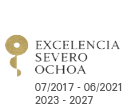Activity Detail
Seminar
Studying how the mechanical conditions of the micro-environment orchestrates tumor growth and metastasis
J. Manuel García-Aznar
 Mechanobiology is a field of science that aims to understand how mechanics regulate biology. It focuses on how mechanical forces and alterations in mechanical properties of cell or tissues regulate biological processes in development, physiology and disease. In fact, all these processes occur in our body, which presents a clear structural and hierarchical organization that goes from the organism to the cellular level. To advance in the understanding of all these processes at different scales requires the use of simplified representations of our body, which is normally known as modelling or equivalently the creation of a model. Different types of models can be found in the literature: in-vitro, in-vivo and in-silico models.
Here, I will present our modelling strategy in which we integrate different mathematical models and in-vitro experiments in order to tackle relevant mechanical-based mechanisms in tumor growth and cancer metastasis progression [1,2].
Due to the complexity of all these mechanisms, mathematical modelling is a relevant tool for providing deeper insight and quantitative predictions of the mechanical interplay between cells and extracellular matrix during cell migration and tumour growth. To assess the predictive capacity of these models, we will compare our numerical results with microfluidic-based experiments [2,3], which provide experimental information to test and refine the main assumptions of our models. Actually, we design and fabricate multi-channel 3D microfluidics cell culture chips, which allow recreating the tumour micro-environment by means of developing tumour organoids [5]. Therefore, this kind of organ-on-a-chip experiments constitutes a novel modelling strategy of in vitro multicellular human systems that in combination with mathematical simulations provide a relevant tool for research in mechanobiology.
In the presentation I will focus on showing our more recent findings about how tumour cells migrate and extravasate in 3D, but also the new investigations of how matrix mechanics is regulating the size and organization of tumour organoids.
References
1. Escribano J, Chen M, Moeendarbary E, Cao X, Shenoy V, Garcia-Aznar JM, Kamm RD, Spill F. Balance of Mechanical Forces Drives Endothelial Gap Formation and May Facilitate Cancer and Immune-Cell Extravasation. PLOS Computational Biology, in press.
2. Gonçalves, I. G., & Garcia-Aznar, J. M. (2021). Extracellular matrix density regulates the formation of tumour spheroids through cell migration. PLoS computational biology, 17(2), e1008764.
3. Plou, J., Juste-Lanas, Y., Olivares, V., Del Amo, C., Borau, C., & García-Aznar, J. M. (2018). From individual to collective 3D cancer dissemination: roles of collagen concentration and TGF-β. Scientific reports, 8(1), 12723.
Mechanobiology is a field of science that aims to understand how mechanics regulate biology. It focuses on how mechanical forces and alterations in mechanical properties of cell or tissues regulate biological processes in development, physiology and disease. In fact, all these processes occur in our body, which presents a clear structural and hierarchical organization that goes from the organism to the cellular level. To advance in the understanding of all these processes at different scales requires the use of simplified representations of our body, which is normally known as modelling or equivalently the creation of a model. Different types of models can be found in the literature: in-vitro, in-vivo and in-silico models.
Here, I will present our modelling strategy in which we integrate different mathematical models and in-vitro experiments in order to tackle relevant mechanical-based mechanisms in tumor growth and cancer metastasis progression [1,2].
Due to the complexity of all these mechanisms, mathematical modelling is a relevant tool for providing deeper insight and quantitative predictions of the mechanical interplay between cells and extracellular matrix during cell migration and tumour growth. To assess the predictive capacity of these models, we will compare our numerical results with microfluidic-based experiments [2,3], which provide experimental information to test and refine the main assumptions of our models. Actually, we design and fabricate multi-channel 3D microfluidics cell culture chips, which allow recreating the tumour micro-environment by means of developing tumour organoids [5]. Therefore, this kind of organ-on-a-chip experiments constitutes a novel modelling strategy of in vitro multicellular human systems that in combination with mathematical simulations provide a relevant tool for research in mechanobiology.
In the presentation I will focus on showing our more recent findings about how tumour cells migrate and extravasate in 3D, but also the new investigations of how matrix mechanics is regulating the size and organization of tumour organoids.
References
1. Escribano J, Chen M, Moeendarbary E, Cao X, Shenoy V, Garcia-Aznar JM, Kamm RD, Spill F. Balance of Mechanical Forces Drives Endothelial Gap Formation and May Facilitate Cancer and Immune-Cell Extravasation. PLOS Computational Biology, in press.
2. Gonçalves, I. G., & Garcia-Aznar, J. M. (2021). Extracellular matrix density regulates the formation of tumour spheroids through cell migration. PLoS computational biology, 17(2), e1008764.
3. Plou, J., Juste-Lanas, Y., Olivares, V., Del Amo, C., Borau, C., & García-Aznar, J. M. (2018). From individual to collective 3D cancer dissemination: roles of collagen concentration and TGF-β. Scientific reports, 8(1), 12723.





